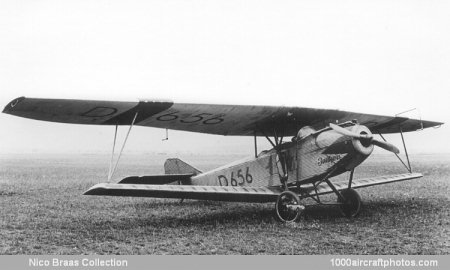08/31/2012. In 1925 Junkers continued an experimental series with the high-wing Sport T 26, a series that began with the T 19 in 1921, and the intermediate version were the T 21, T 22 and T 23. As with the T 23, the T 26 was tested with both a high wing as the T 26 E (Eindecker, monoplane) and with an additional lower wing as the T 26 D (Doppeldecker, biplane).
The aircraft was intended as an economical training device, for initial training as a biplane (relatively long take off distance, low landing speed) as well as for advanced training (relatively short take off distance, and higher landing speed than Eindeckerversion). According Junkers brochures the type could be quickly converted, three persons were able to transform the biplane into a monoplane within 30 minutes, or remodel the monoplane into a biplane in 15 minutes.
After serving experimental purposes, the type T 26 was offered as a training aircraft for flying schools, however, Junkers could not prevail against the many offers for training aircraft types made by German manufacturers. Only six copies were built, equipped with an 80 hp Junkers-Motor L 1a engine, top speed was 81 mph (130 kmh), with the additional underwing (T 26 D) 71 mph (115 kmh). Fitted with an 80 hp Argus As-engine, a T 26 E was still flown in 1931.
